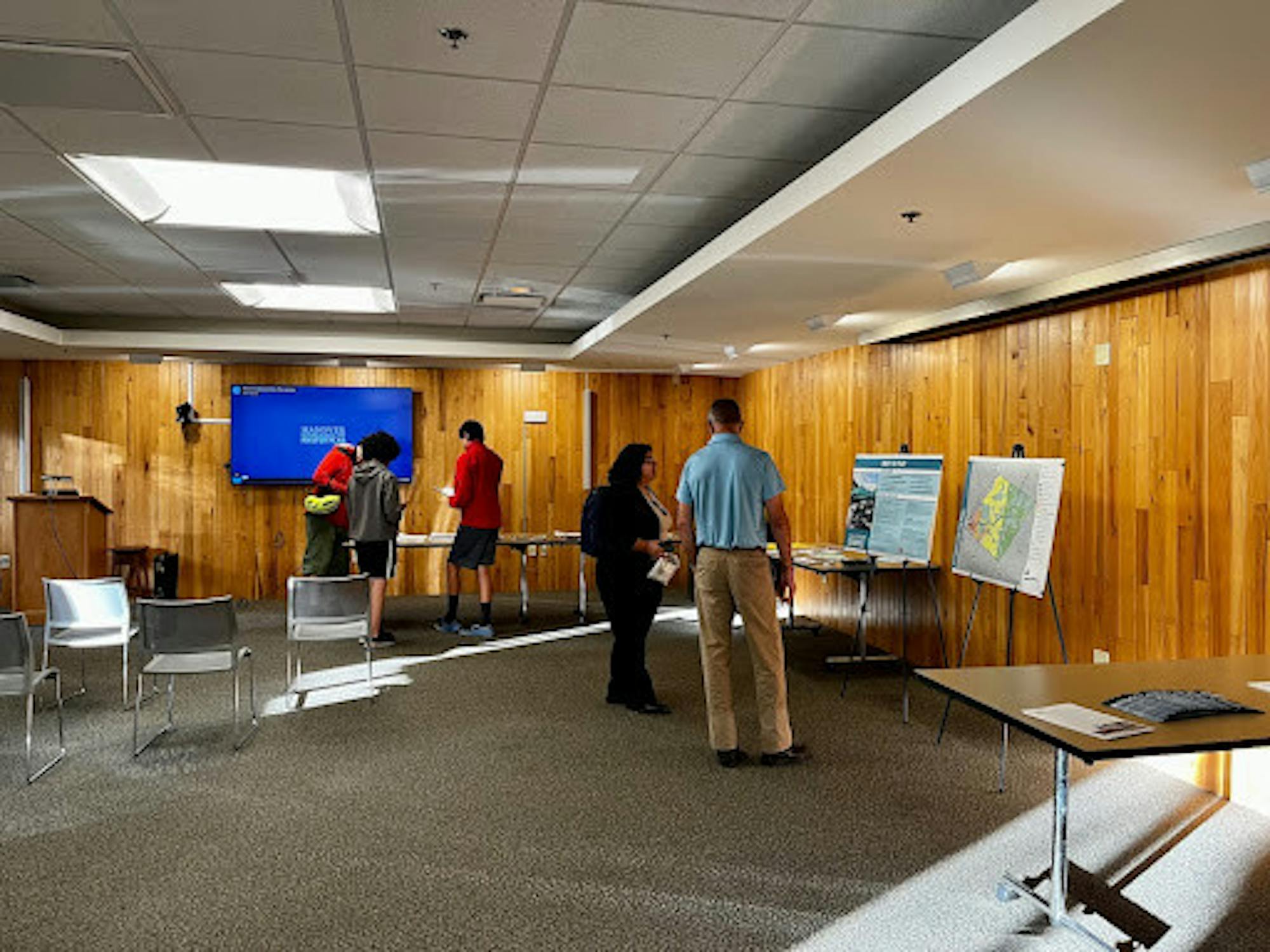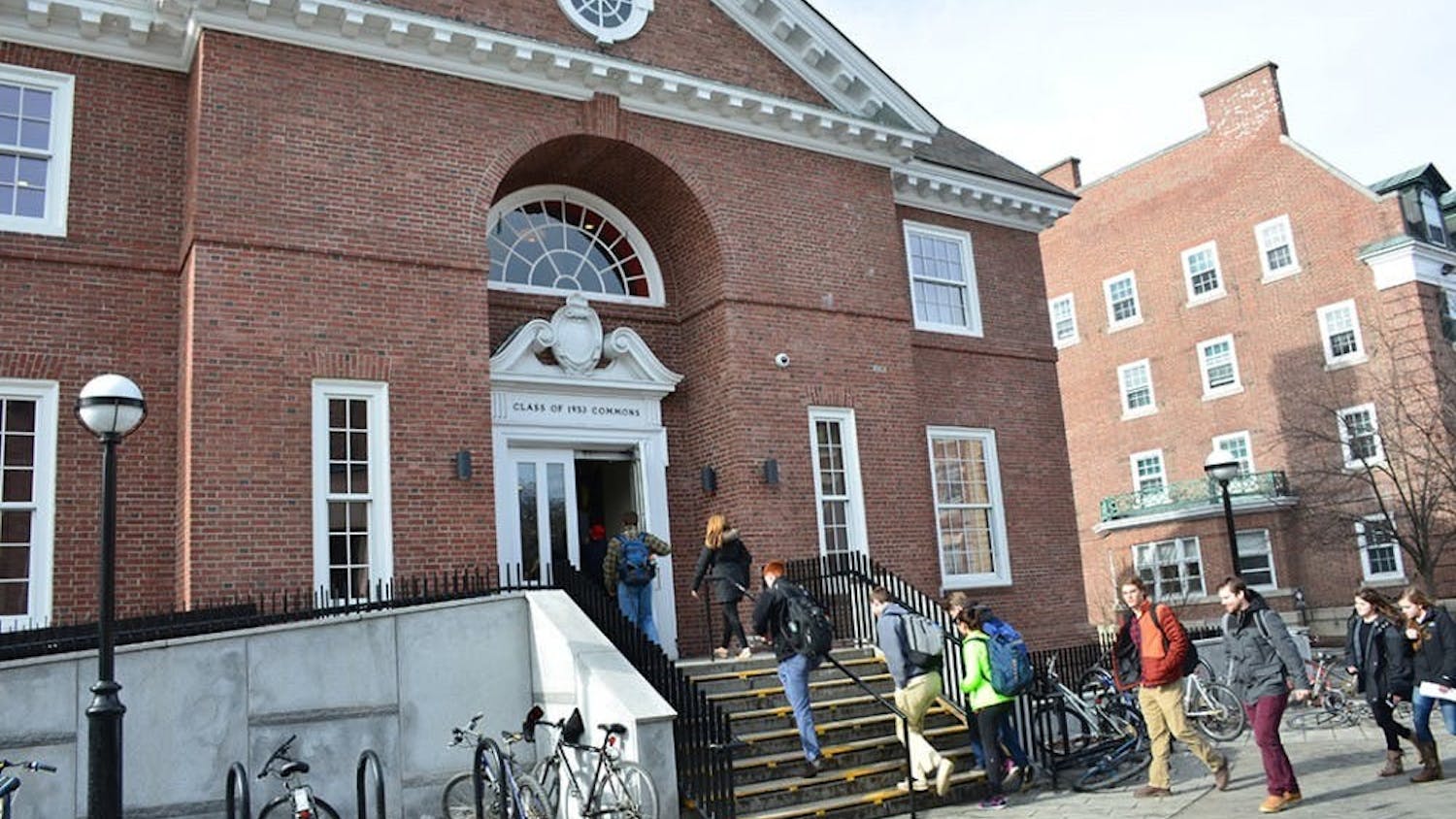Last week, the Hanover Planning Board released a draft of its Sustainability Master Plan for public view –– the Town’s first such plan since 2003. The Board held two open house meetings to introduce students and other community members to the plan on Oct. 18 and 19.
The current plan was drafted by Town staff, an advisory committee composed of 12 Hanover residents and Vanasse Hangen Brustlin, a consulting firm. The Hanover plan is meant to serve as a guide for the town’s growth over the next decade or more and will serve as the basis for new capital improvement projects, subdivision regulations and zoning ordinances, according to Hanover director of planning, zoning and codes Robert Houseman.
The 2023 plan is broken down into several categories, including housing affordability, economic resilience, safe and accessible transportation and addressing climate change, Houseman said.
“This master plan is a break from traditional master plans,” Advisory committee member Chris Kennedy said. “Sustainability is part of the DNA of the document.”
The plan lists 43 specific goals across its eight chapters, along with specific strategies and metrics for achieving each goal.
Kennedy said the advisory committee received a “significant” amount of public feedback related to housing. Based on finding a shortage of housing in the 2023 assessment, the plan pledged to facilitate the development of 800 new units by 2040.
Among its proposals, the plan suggested creating an “inclusionary zoning policy” which would require developers to create affordable housing units within some new developments. The plan also encouraged ideas such as removing parking minimums, working with the College to house 90 percent of undergraduate students on campus, and building affordable and workforce housing for middle-income earners who want to live and work in Hanover.
“People are aware that there is a clear housing shortage in the Upper Valley,” Kennedy said. “We’re going to have to think about ways to increase the number of housing units while keeping the character of the town largely intact.”
Advisory committee member Joanna Whitcomb said adding 800 new housing units without changing the unique architectural “character” of the town will require thinking “creatively” in terms of design solutions, and building higher closer to downtown.
“What we need is an overhaul of zoning ordinances,” Whitcomb said. “The town has to be really creative to come up with solutions.”
“A lot of people get scared by the idea of density, but you can build in a way that fits the vernacular style, doesn’t disturb people and is more affordable,” Hryniewicz added.
Another section of the plan focuses on economic “resilience,” including suggestions such as a startup business fund, efforts to increase reliable high-speed internet and plans for a “low carbon economy,” according to the plan.
The third section of the plan includes ideas for preserving natural areas such as increasing the amount of permanently conserved land to 30 percent of the total town land, completing a footpath through conserved land around the downtown area and making sure that publicly accessible outdoor opportunities are available within a 10 minute walk of every residence.
Whitcomb said the plan also looks to increase the “vibrancy” of the downtown, and she added that the committee spoke with many downtown merchants. Ideas included in the plan include reviewing zoning restrictions that limit the density, growth and type of commercial development in the downtown area, working with the College to allow students’ DASH accounts to be accepted in Hanover restaurants and attracting a new “anchor store” south of Lebanon Street.
The sixth section is focused on climate change, and includes the goal of shifting to solely renewable electricity by 2030 and solely renewable heating and transportation by 2040, Hryniewicz said.
In order to achieve these climate goals, the plan suggests requiring that all new public building construction and major renovation be net-zero or net-positive and transitioning the Town-owned vehicle fleet to “zero emission alternatives.” Hanover is also preparing for an “increase in climate migrants,” Kennedy said.
“This area of the country has not been as affected yet by climate change as other regions, and as such, we are probably going to experience climate migration,” Kennedy said.
The last section focuses on making the Town government more “accountable and collaborative,” by establishing student positions in Town government, exploring the possibility of creating a new Communications Manager position and modernizing facilities like the Town’s water distribution system, main fire station and police station.
Houseman said the Town held a “very successful” public forum in March 2022, which was followed by a preference survey about where development should take place. Additionally, Houseman said that the committee tabled in Berry Library to hear student feedback.
Hryniewicz said the public is encouraged to submit comments on the plan — either on the Master Plan website or in writing at the Planning, Zoning and Codes department — prior to a yet-unscheduled public hearing to be held in November or December. Following public comments, Houseman said the Planning Board will vote on whether to adopt the plan.
“This is a really critical time for people to get involved,” Hryniewicz said. “This is a chance in which we can think about what we want the town to look like long-term.”



